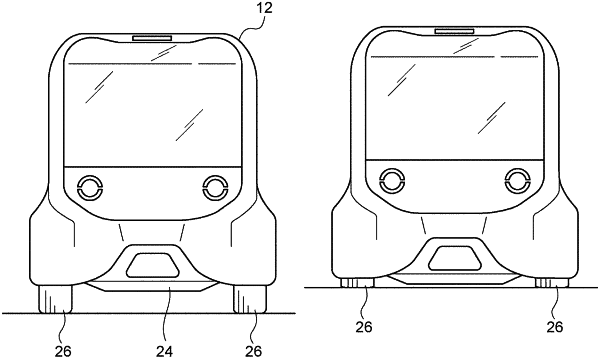| CPC B60G 17/0155 (2013.01) [B60G 11/27 (2013.01); B60G 2202/152 (2013.01); B60G 2400/252 (2013.01); B60G 2400/52 (2013.01); B60G 2500/30 (2013.01); B60G 2600/044 (2013.01); B60G 2800/914 (2013.01)] | 8 Claims |

|
1. A vehicle height adjusting device, comprising:
a processor programmed to
set a vehicle height to a first state or a second state, the first state being a state in which a tire of a vehicle is suspended at a predetermined position with respect to a vehicle body in a vehicle up-down direction, and the second state being a state in which the tire is suspended at a position closer to the vehicle body in the vehicle up-down direction than in the first state;
predict whether a lower portion of the vehicle interferes with a road surface in the second state; and
an air pressure sensor configured to detect an air pressure of the tire of the vehicle,
wherein
the processor is programmed to
set the vehicle height to one of the first state and the second state, and
restrict a transition from the first state to the second state in response to predicting an interference between the lower portion of the vehicle and the road surface, and
the processor is programmed to
calculate a remaining interference time until the lower portion of the vehicle interferes with the road surface, by using a rate of decrease in the air pressure of the tire of the vehicle, the rate of decrease in the air pressure of the tire being detected by the air pressure sensor,
compare the detected air pressure with a predetermined threshold, and
predict the interference between the lower portion of the vehicle and the road surface in response to (i) the detected air pressure being smaller than the predetermined threshold and (ii) the remaining interference time that has been calculated being shorter than a predetermined time.
|